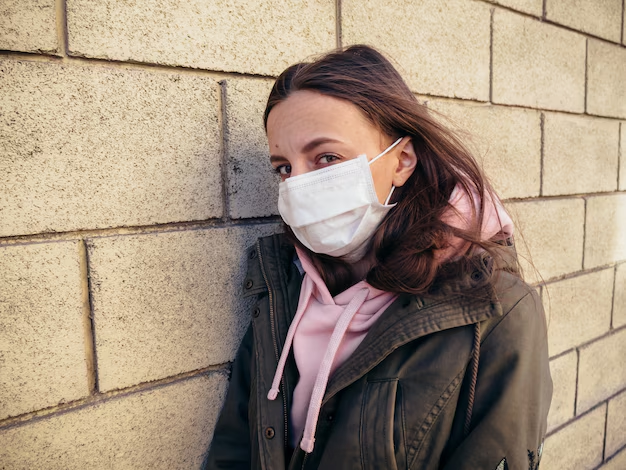Understanding Consumption Tuberculosis: Everything You Need to Know
In a world where medical advancements continue to transform how we approach diseases, certain ailments have been enshrined in our history books, etched in stories of yore, leaving a lasting impact on our cultural and biological lexicon. One such affliction is consumption tuberculosis, an illness that, even today, captivates both scientific inquiry and public curiosity. What is it, why was it once so feared, and how do we address it now? Let's delve into this intricate and historically rich topic.
A Brief History: The Era of Consumption
Before modern medicine gave us vaccines and antibiotics, tuberculosis, portrayed as “consumption,” was widely prevalent, impacting people across the globe. The disease was named "consumption" because of the way it seemed to consume its victims, causing extreme weight loss, persistent cough, and eventually death.
The Societal Impact
- Cultural Influence: Consumption had a profound effect on 19th-century art and literature. From the romanticized portrayals of the disease in novels to its influence on fashion with pale, thin figures becoming stylish, its impact was widespread.
- Public Health: As the illness surged, it led to the establishment of sanatoriums. These were specialized facilities designed to treat tuberculosis patients, often located in the countryside, offering fresh air and rest as a form of therapy.
The Science of Tuberculosis: What Causes It?
At its core, tuberculosis (TB) is a disease caused by the bacterium Mycobacterium tuberculosis. Although primarily affecting the lungs, TB can attack various parts of the body, leading to varied symptoms and complications.
How Does TB Spread?
The most common transmission method for tuberculosis is through the air. When a person with active TB in their lungs coughs, sneezes, or even talks, tiny droplets containing the bacteria are expelled, which can then be inhaled by others.
Key Factors Influencing Spread
- Proximity and Time: Close and prolonged interaction with an infected individual increases the likelihood of contracting the disease.
- Ventilation: Spaces with poor airflow enhance the risk of airborne diseases like TB.
Symptoms of Tuberculosis: What to Watch For
It’s crucial to recognize the signs of tuberculosis, as early detection and treatment can prevent its spread and reduce complications.
Common Symptoms
- Persistent Cough: Lasting more than three weeks and sometimes producing blood.
- Weight Loss: Sudden and unexplained weight loss is a hallmark of consumption.
- Fatigue: Chronic tiredness and weakness.
- Fever and Night Sweats: Moderate fever accompanied by sweating, particularly at night.
When TB Travels: Extra-Pulmonary Tuberculosis
In some cases, tuberculosis can affect body parts other than the lungs. This extra-pulmonary TB might involve:
- Bones and Joints: Causing pain and, on occasion, visible deformities.
- Central Nervous System: Leading to meningitis and neurological issues.
- Kidneys and Bladder: Resulting in urine issues and abdominal pain.
Modern-Day Diagnosis and Treatment
With advancements in medical technology, diagnosing tuberculosis is more precise and faster.
How Is TB Diagnosed?
- Skin Test: A small amount of testing solution is injected into the skin; swelling indicates exposure.
- Blood Tests: Detecting the presence of TB bacteria.
- Imaging: Chest X-rays to identify lung damage.
- Sputum Tests: Analyzing mucus for TB bacteria.
Treating Tuberculosis Today
The landscape of tuberculosis treatment has dramatically improved, requiring a combination of antibiotics over an extended period to ensure the bacteria are eliminated.
Treatment Regimen
- Antibiotics: The primary drugs include Isoniazid, Rifampin, Ethambutol, and Pyrazinamide.
- Duration: Typically involving a 6 to 9-month course, although can be longer for drug-resistant TB.
The Challenge of Drug-Resistant TB
A concerning trend in tuberculosis treatment is the rise of drug-resistant strains. These strains do not respond to the standard drugs, complicating treatment strategies.
Why Resistance Occurs
- Incomplete Treatment: Patients who don’t complete their prescribed course may contribute to resistance.
- Overuse of Antibiotics: Misuse in both human medicine and agriculture can enhance resistance development.
Preventive Measures and Public Health Initiatives
Prevention remains a cornerstone in combating tuberculosis globally.
Vaccination and Public Awareness
- BCG Vaccine: Used in many parts of the world, especially where TB is prevalent; not commonly used in the United States due to limited effectiveness in adults and the availability of other controls.
- Public Education: Raising awareness about TB symptoms, transmission, and the importance of following treatment regimens.
Global Health Initiatives
- Directly Observed Therapy (DOTS): A strategy where healthcare providers supervise TB patients to ensure adherence to treatment, reducing the risk of resistance.
The Future of Tuberculosis Research
The battle against tuberculosis is far from over, but science continues to innovate.
Emerging Innovations
- New Vaccines: Research is underway aiming at developing more effective vaccines.
- Rapid Diagnostics: Tools that offer quicker and more accurate identification of TB infection.
- Advanced Treatments: Exploring shorter, more manageable drug therapies.
Final Insight
Understanding consumption tuberculosis transcends historical context and dives into a modern fight against a formidable bacterium. The tale of tuberculosis is one of challenge, resilience, and persistent hope. With collective effort in education, prevention, and treatment, more strides are made daily toward a world where TB is not just a relic of the past but a fully manageable condition.
Quick Summary: Key Points on Tuberculosis 🤔📋
- Definition: Tuberculosis is an infectious disease caused by Mycobacterium tuberculosis.
- Historical Context: Known as “consumption” during the 19th century, it influenced art and culture.
- Symptoms: Includes persistent cough, weight loss, fatigue, fever, and night sweats.
- Diagnosis: Utilizes skin tests, blood tests, imaging, and sputum analysis.
- Treatment: Long-term antibiotic regimens, facing challenges with drug-resistant strains.
- Prevention: Includes the BCG vaccine, public education, and global health initiatives like DOTS.
- Future Outlook: Continued research into vaccines, diagnostics, and innovative treatments.
Each step in this journey, from past fears to present understanding, showcases human resilience and ingenuity in tackling one of nature's persistent adversaries. 🌍🔬💪
